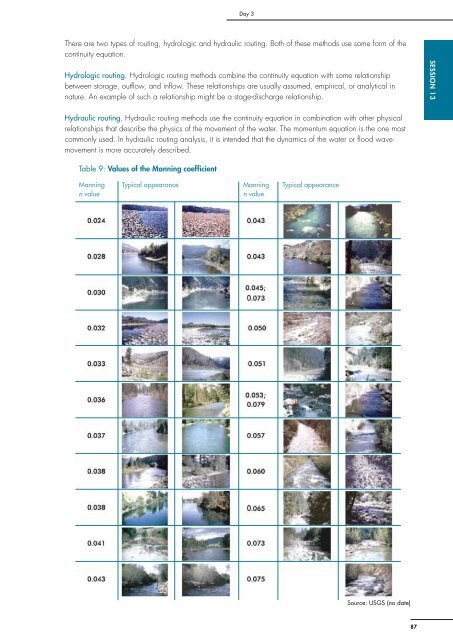Flash Flood Risk Management â A Training of Trainers ... - ReliefWeb
Flash Flood Risk Management â A Training of Trainers ... - ReliefWeb
Flash Flood Risk Management â A Training of Trainers ... - ReliefWeb
You also want an ePaper? Increase the reach of your titles
YUMPU automatically turns print PDFs into web optimized ePapers that Google loves.
Day 3<br />
There are two types <strong>of</strong> routing, hydrologic and hydraulic routing. Both <strong>of</strong> these methods use some form <strong>of</strong> the<br />
continuity equation.<br />
Hydrologic routing. Hydrologic routing methods combine the continuity equation with some relationship<br />
between storage, outflow, and inflow. These relationships are usually assumed, empirical, or analytical in<br />
nature. An example <strong>of</strong> such a relationship might be a stage-discharge relationship.<br />
Session 13<br />
Hydraulic routing. Hydraulic routing methods use the continuity equation in combination with other physical<br />
relationships that describe the physics <strong>of</strong> the movement <strong>of</strong> the water. The momentum equation is the one most<br />
commonly used. In hydraulic routing analysis, it is intended that the dynamics <strong>of</strong> the water or flood wave<br />
movement is more accurately described.<br />
Table 9: Values <strong>of</strong> the Manning coefficient<br />
Manning Typical appearance Manning Typical appearance<br />
n value<br />
n value<br />
Source: USGS (no date)<br />
87

















